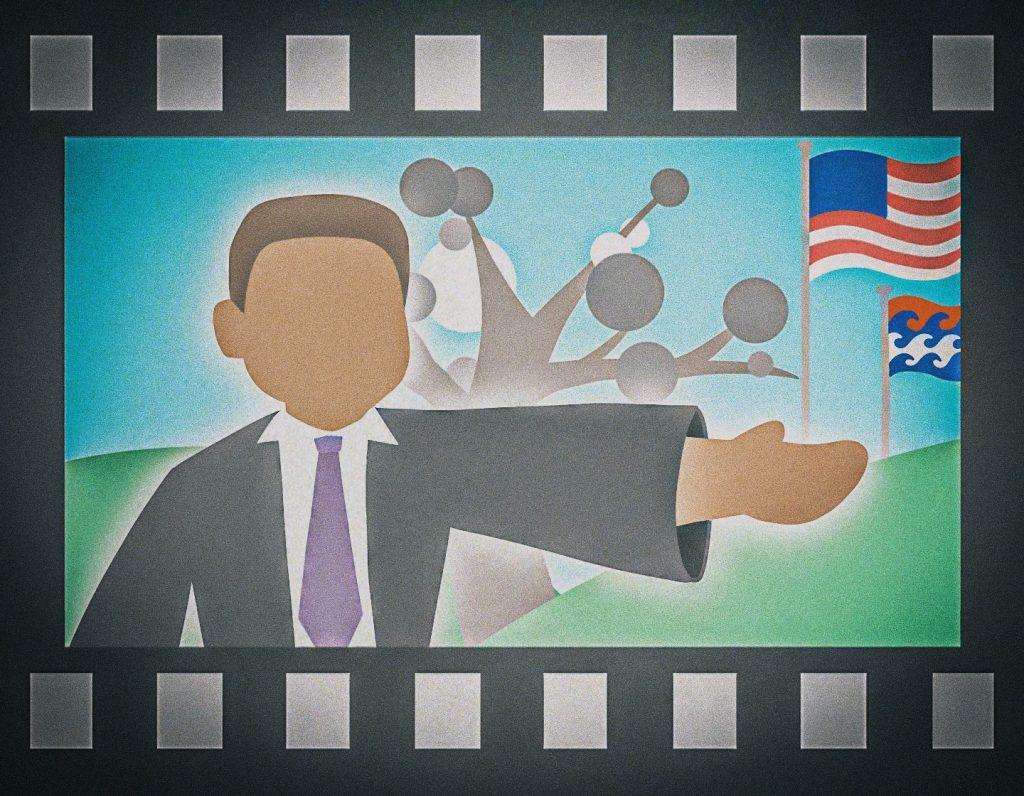
Art by Vivian Hsia
Transparency Item: The Perspectives section of the Graphic is comprised of articles based on opinion. This is the opinion and perspective of the writer.
In the year 1895 in Paris, something drastically changed in the way people told stories — the art of film began. It became a pictorial viewing experience filled with music, actors and visual plotlines that weren’t stuck on a page any longer. In 1926, 31 years later, films added sound into the mix, according to The Picture Show Man. Audiences heard words spoken aloud that had once been tied down to a script.
Today, filmmakers have been able to utilize their platform to create storylines centered around a particular group of people, social issue or movement, which are extremely effective in spreading awareness.
Recent films brought light to social issues — “The Menu” (2022) poses a commentary about the rich, “Greenbook” (2018) talks about the racism and danger non-whites faced in America in the ’60s and “The Joker“ (2019) reflects the negative effects of bullying and disregard for mental health in America — to an extreme.
“Two main issues come to mind that are reflected both in the world of ‘The Joker’ and present day society: the social-political structure of the country and the disregard for mental health,” Aidan Park wrote in The Academy Chronicle. “[The film] provides more context for the idea that there is no middle class in our society, only leaving space for the lower class and the upper class in today’s social structure.”
“The Joker” was arguably one of the top films of its year and, across all audiences, a beloved villain from the times of the D.C. Comics. Director Todd Philips was able to create a memorable film while also highlighting the societal issues the Joker faced that reflect people’s struggles today with mental health and neglect.
The aforementioned films are prime examples of effective commentary in film — they start conversation, build a fanbase and create a story for people to get attached to so they understand the messages on a deeper level that will hopefully create a change in real life.
Social commentary in films isn’t a new phenomenon. “To Kill a Mockingbird“ (1962) was based on the novel by Harper Lee and socially criticized the unfair treatment of Black people in society at the time. “The Grapes of Wrath” (1940) illustrated the struggles of poor farmers during The Great Depression.
Social commentary in films proves itself to be effective not in physical results, but because of the effect it has on its audiences. Stories with a message emotionally touch people and mentally stick with them. This notion was proven in the study Crying at the Movies: A Physiological and Emotional Connection by Paul Glover. I believe this should continue.
Now, every movie doesn’t have to force in a social commentary — “Dumb and Dumber“ (1994), “Madagascar” (2005) and “Halloween“ (1978) are some examples of movies that were made to simply just be watched and enjoyed.
Next time you go to a theater and sit down to be transported into a world unlike your own, keep an eye out for the subtle nods to society and the correspondence the film may have to some issues that we have in our own world.
More often than not, when films have social commentary, it is effective, meaningful and can have lasting impacts on its viewers.
____________________
Follow the Graphic on Twitter: @PeppGraphic
Email Emily Chase: emily.chase@pepperdine.edu
